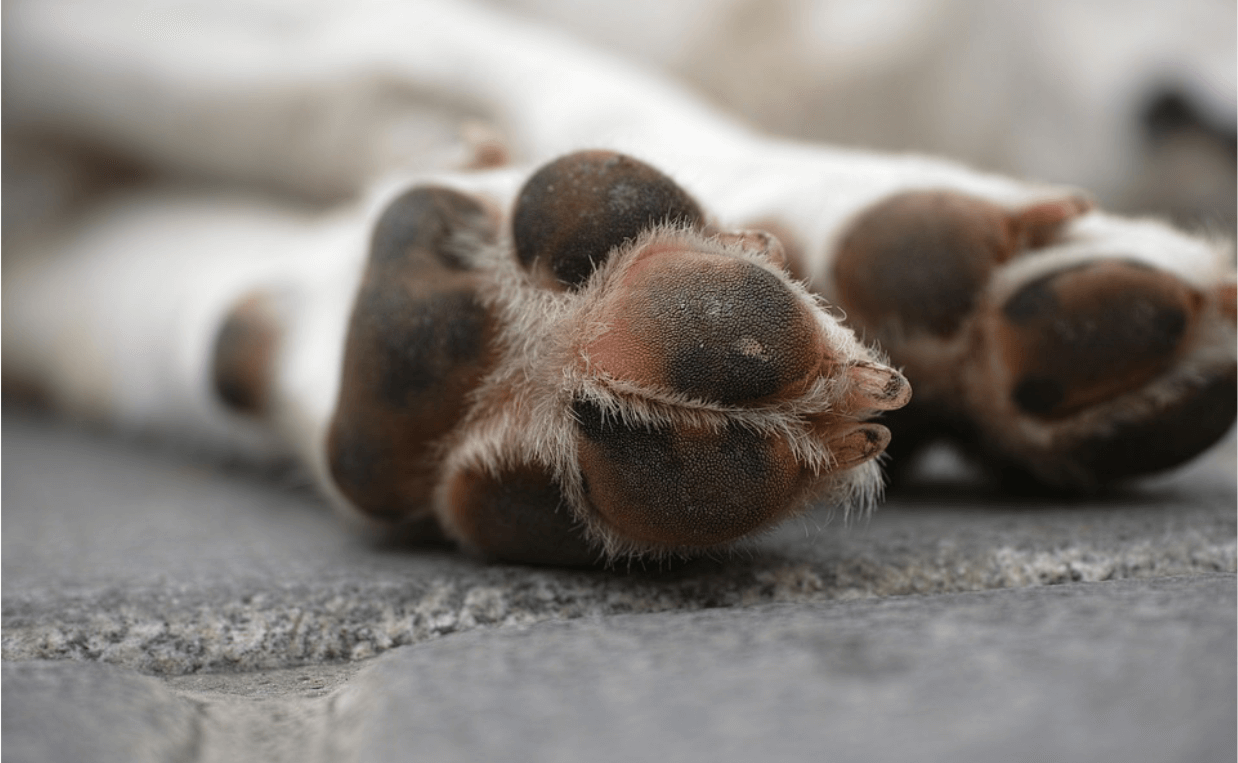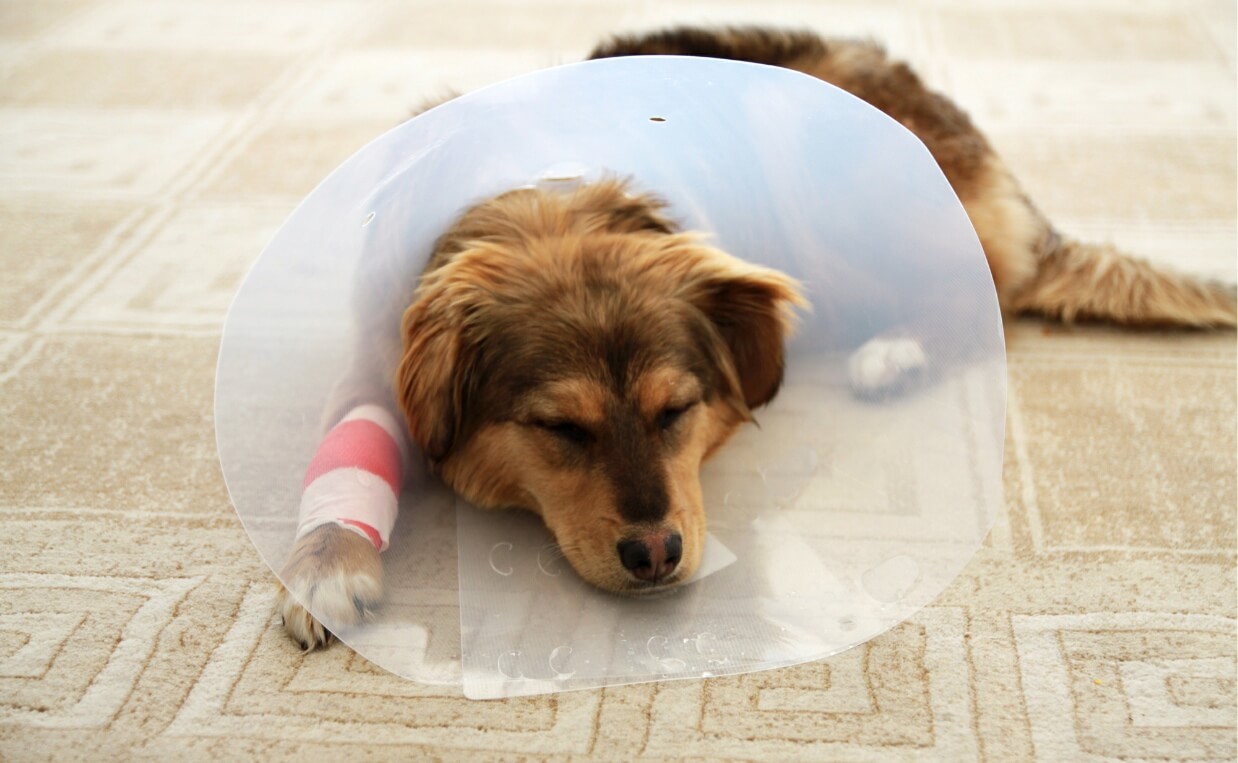
Dogs are playful, curious, and sometimes a little too adventurous for their own good. From scraped paws after a romp in the park to run-ins with wildlife, pet parents often face unexpected situations. While serious health issues always require veterinary care, many minor dog emergencies can be safely managed at home with the right knowledge.
This guide walks you through common minor dog emergencies, what to do in the moment, and when it’s time to call your veterinarian. With clear steps and calm action, you’ll feel more confident caring for your pup when the unexpected happens.
Why Preparation Matters
When something goes wrong, your dog looks to you for help. Knowing how to handle minor dog emergencies in advance reduces stress for both of you and helps prevent small issues from becoming major ones.
Preparation doesn’t just mean having a first aid kit ready. It means understanding which emergencies you can safely manage at home and when to head straight to your vet.
Common Minor Dog Emergencies and What to Do
Below are some of the most common minor dog emergencies pet parents encounter, along with step-by-step guidance.
Small Cuts and Scrapes
Dogs can nick themselves on sharp objects, pavement, or even while playing.
What to do:
- Gently clean the wound with lukewarm water or pet-safe antiseptic.
- Apply light pressure with sterile gauze if bleeding.
- Bandage if needed to prevent licking.
When to call the vet:
- Bleeding doesn’t stop within 10 minutes.
- Wound is deep or looks infected.
Torn or Broken Nails
A broken nail can bleed and cause pain.
What to do:
- Press with gauze to stop bleeding.
- Use styptic powder or cornstarch if available.
- Keep your dog calm and discourage licking.
When to call the vet:
- Bleeding lasts more than 20 minutes.
- The nail is completely torn off or your dog is limping.
Bee Stings or Insect Bites
Most are mild, but some cause allergic reactions.
What to do:
- Remove the stinger with a credit card edge.
- Apply a cold compress.
- Monitor for swelling or distress.
Call your vet immediately if:
- Your dog develops facial swelling, hives, or difficulty breathing.
- If poisoning is suspected, call your vet or the ASPCA Pet Poison Hotline at (888) 426-4435.
Upset Stomach and Vomiting
A common issue when dogs eat something they shouldn’t.
What to do:
- Withhold food for 12–24 hours (keep water available).
- Reintroduce a bland diet such as rice with pumpkin or boiled potato.
- Watch for improvement.
When to call the vet:
- Vomiting lasts more than 24 hours.
- There’s blood in the vomit.
- Symptoms include lethargy or diarrhea.
Related: Home Remedies – How to Treat Your Dog’s Upset Stomach at Home

Diarrhea
Dogs often develop diarrhea from dietary indiscretions, sudden food changes, or mild stomach bugs.
What to do:
- Withhold food for 12–24 hours (but provide water).
- Reintroduce a bland diet such as rice with pumpkin, sweet potato, or boiled potato.
- Monitor stool consistency and frequency.
When to call the vet:
- If diarrhea lasts longer than 24 hours.
- If there is blood in the stool.
- If your dog becomes lethargic, dehydrated, or refuses food/water.
Objects Stuck in Paws or Fur
Foxtails, burrs, and thorns cause irritation.
What to do:
- Calm your dog.
- Remove the object with tweezers if visible.
- Clean the area with soap and water.
- Bandage if there’s a wound.
When to call the vet:
- Object can’t be removed fully.
- Swelling or discharge appears.
Slivers or Splinters
Wooden decks, fences, and rough trails can leave dogs with splinters in their paws or skin.
What to do:
- Calm your dog and gently restrain them if needed.
- Use clean tweezers to grasp the splinter and pull it out in the same direction it entered.
- Wash the area with mild soap and water.
- Apply a light bandage if necessary to prevent licking.
When to call the vet:
- If the sliver is deeply embedded, breaks off under the skin, or you can’t remove it fully.
- If redness, swelling, or pus develops — signs of infection.
Ticks
Ticks are not only irritating but can also transmit diseases like Lyme disease if not removed promptly.
What to do:
- Use fine-tipped tweezers to grasp the tick as close to the skin as possible.
- Pull upward with steady, even pressure (don’t twist or jerk).
- Clean the bite area with soap and water or pet-safe antiseptic.
- Dispose of the tick in rubbing alcohol or flush it down the toilet.
When to call the vet:
- If you can’t remove the tick completely (mouthparts remain in the skin).
- If you notice signs of illness afterward (fever, lethargy, lameness, loss of appetite).
- If multiple ticks are present and you’re concerned about infestation.
Related: Tick Borne Diseases in Dogs – Symptoms and Treatments
Eye Irritations
Dust, pollen, or grass seeds can cause minor eye irritation.
What to do:
- Gently flush the eye with sterile saline solution or clean lukewarm water.
- Wipe away discharge with a damp cotton pad.
- Keep your dog from pawing at their eye.
When to call the vet:
- If redness, swelling, or discharge persists after rinsing.
- If your dog squints continuously or seems painful.
- If a foreign object is embedded and can’t be flushed out.
Ear Irritations
Dogs often shake their heads or scratch when ears are irritated by dirt, foxtails, or mild wax buildup.
What to do:
- Gently wipe the outer ear with a cotton pad (never use cotton swabs inside the canal).
- If you see a small foxtail or debris at the edge of the ear, carefully remove it.
- Keep your dog calm and discourage scratching.
When to call the vet:
- If irritation continues, ears smell bad, or you see pus-like discharge.
- If your dog cries in pain when you touch their ears.
Paw Pad Burns
Hot pavement, sand, or concrete can cause painful paw burns in summer.
What to do:
- Move your dog off hot surfaces immediately.
- Rinse paws with cool (not ice-cold) water.
- Apply a clean, damp cloth or bandage to protect the area.
- Keep your dog from licking or walking on rough ground until healed.
When to call the vet:
- If the paw pads blister, peel, or bleed.
- If your dog refuses to walk or shows significant pain.
Overheating and Mild Dehydration
Heat can quickly affect dogs.
What to do:
- Move to a cool area.
- Offer small sips of water.
- Use a damp towel or fan to lower temperature.
Emergency signs:
- Vomiting, collapse, or unresponsiveness → this is heatstroke, not minor. Seek emergency care.
Related: How to Keep Your Dog Cool During a Heatwave
Porcupine Quills
Curious dogs sometimes tangle with porcupines.
What to do:
- Do not pull out quills yourself. They are barbed and break easily.
- Keep your dog calm and prevent pawing.
- Call your vet immediately—quills require professional removal under sedation.

Snake Bites
Not all snakes are venomous, but all bites should be treated seriously.
What to do:
- Keep your dog calm and still.
- Clean non-venomous bites with soap and water.
- Do not attempt home remedies like sucking out venom.
When to call the vet immediately:
- If you suspect venom or see severe swelling.
- Even for non-venomous bites, if swelling worsens or your dog seems unwell.
Related: How to Keep Your Dog Safe from Venomous Snakes in Colorado
Skunk Sprays
More messy than dangerous, but uncomfortable.
What to do:
- Keep your dog outside to avoid spreading odor.
- Mix 1 quart hydrogen peroxide (3%) + ¼ cup baking soda + 1 tsp dish soap.
- Wash thoroughly (avoid eyes and mouth).
- Rinse and repeat if necessary.
When to call the vet:
- If eyes are irritated or your dog shows distress after exposure.
Dog Bites or Attacks
Even small punctures can turn serious due to bacteria.
What to do:
- For scrapes only: wash gently with soap and water, apply antiseptic, and monitor.
- For puncture wounds or lacerations: keep clean, control bleeding, and call your vet.
When to call the vet immediately:
- Any puncture wound, especially near eyes, throat, chest, or abdomen.
- Signs of infection: swelling, pus, or lethargy.
Cat Scratches
Usually mild but can become infected.
What to do:
- Clean immediately with soap and water.
- Apply antiseptic.
- Monitor for redness or swelling.
When to call the vet:
- If the scratch is deep, bleeding heavily, or near the eyes.
- If signs of infection appear.
How to Stay Calm and Keep Your Dog Calm
During minor dog emergencies, your pup may panic. Stay calm, use a soothing voice, and move slowly. A favorite toy or gentle restraint can help. Your calmness reassures your dog and makes treatment easier.
When a Minor Emergency Becomes Serious
Not every situation stays minor. Call your vet or seek emergency care if you see:
- Uncontrolled bleeding
- Difficulty breathing
- Suspected poisoning (contact vet or ASPCA Pet Poison Hotline: 888-426-4435)
- Ongoing vomiting or diarrhea
- Severe lethargy or collapse
- Wounds exposing muscle or bone
It’s always better to call your vet if you’re unsure.

Prevention is the Best Medicine
You can’t stop every mishap, but you can reduce risks:
- Keep nails trimmed.
- Use flea and tick prevention.
- Store human food, medicine, and chemicals out of reach.
- Supervise outdoor play.
- Avoid hot weather overexertion.
Prevention reduces the likelihood of minor dog emergencies.
Conclusion
Most minor dog emergencies can be managed safely at home with calm action and basic knowledge. But it’s equally important to know when to seek veterinary care. And remember—if your dog ingests something toxic, the ASPCA Pet Poison Hotline (888-426-4435) is available 24/7 for guidance.
👉 What minor dog emergencies have you handled at home, and what worked best for your pup? Share your experiences in the comments—we’d love to hear from you!





 What You Need to Know About Pain Medication for Dogs
What You Need to Know About Pain Medication for Dogs Help Your Dog Fight Seasonal Allergies
Help Your Dog Fight Seasonal Allergies Home Remedies – How to Treat Your Dog’s Upset Stomach at Home
Home Remedies – How to Treat Your Dog’s Upset Stomach at Home What to Do If Your Dog Has Cracked Paw Pads
What to Do If Your Dog Has Cracked Paw Pads Everything You Need to Know About Cannabis Oil for Dogs
Everything You Need to Know About Cannabis Oil for Dogs






Leave a Reply